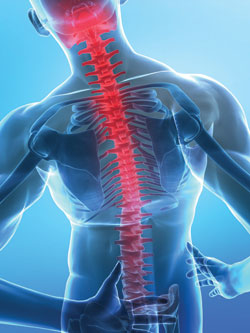 There are various risk factors for a herniated disc.
There are various risk factors for a herniated disc.
There are some risk factors you cannot change. But if you know about them, you can be prepared to consider how they will affect you. These include:
- Advancing age. The process of aging of the discs in the lower back, as well as repeated injury to the discs and spinal muscles, makes a person more likely to have low back problems, which usually begin in midlife.
- Being male.
- History of back injury, previous herniated disc, or back surgery.
Some risk factors you can change, with lifestyle changes or medical treatment. If you take steps to limit the risks from these factors, you can decrease your overall risk of having a herniated disc. Risk factors you can change include:
- Your job or other activities that increase the risk of developing a herniated disc, such as long periods of sitting, lifting or pulling heavy objects, frequent bending or twisting of the back, heavy physical exertion, repetitive motions, or exposure to constant vibration (such as driving).
- Not exercising regularly, doing strenuous exercise for a long time, or starting to exercise too strenuously after a long period of inactivity.
- Smoking. Nicotine and other toxins from smoking can keep spinal discs from absorbing all the nutrients they need from the blood, making disc injury more likely. Smoking also increases your sensitivity to pain. For information on how to quit smoking, see the topic Quitting Smoking.
- Being overweight. Carrying extra body weight (especially in the stomach area) may put additional strain on the lower back, although this has not been proven. But being overweight often also means being in poor physical condition, with weaker muscles and less flexibility. These can lead to low back pain. For information on how to maintain a healthy weight, see the topic Weight Management.
